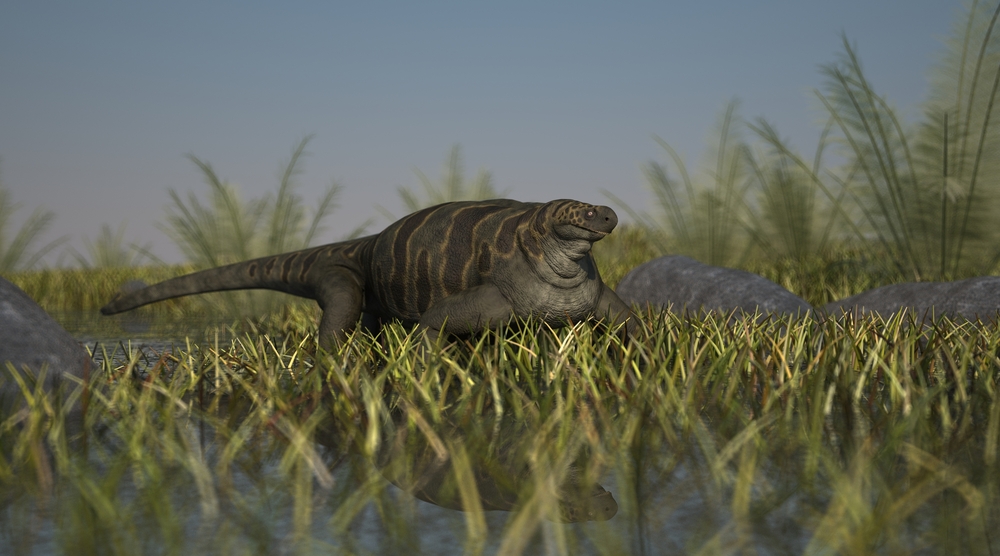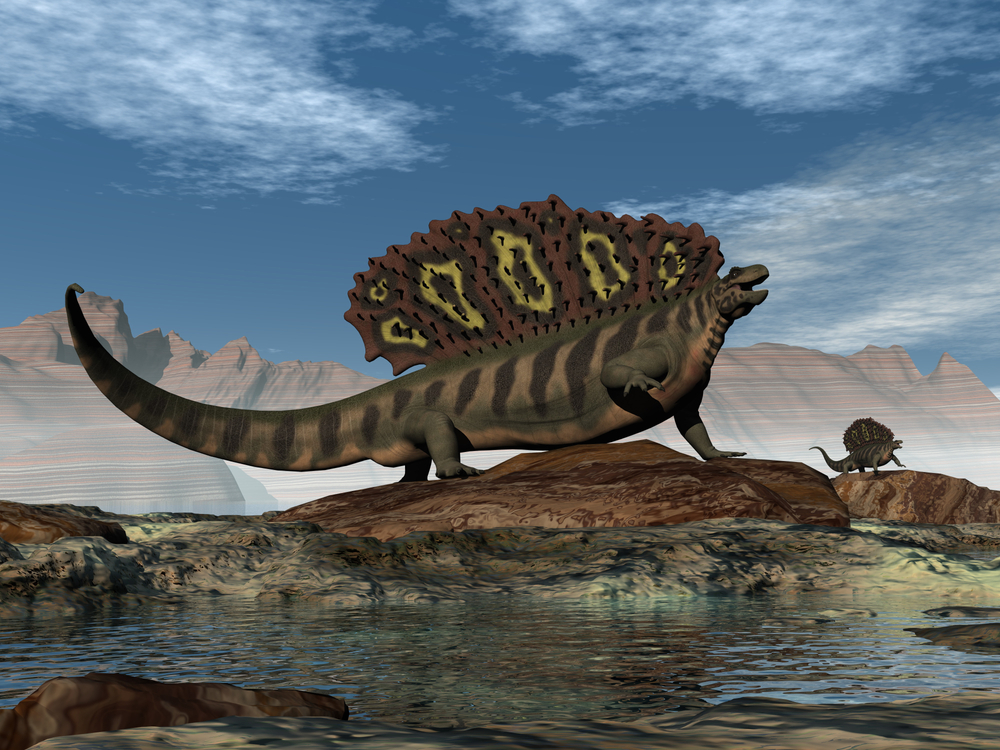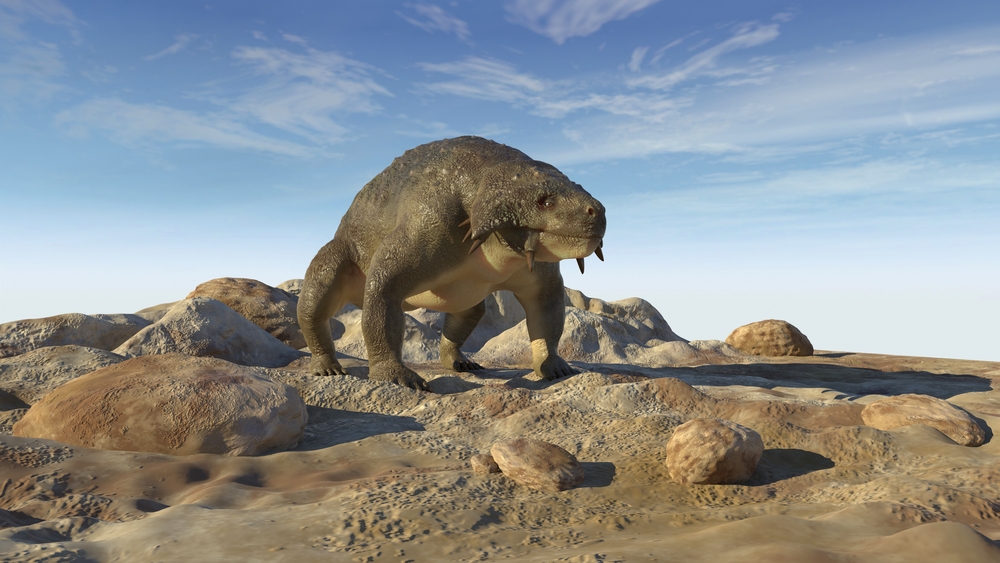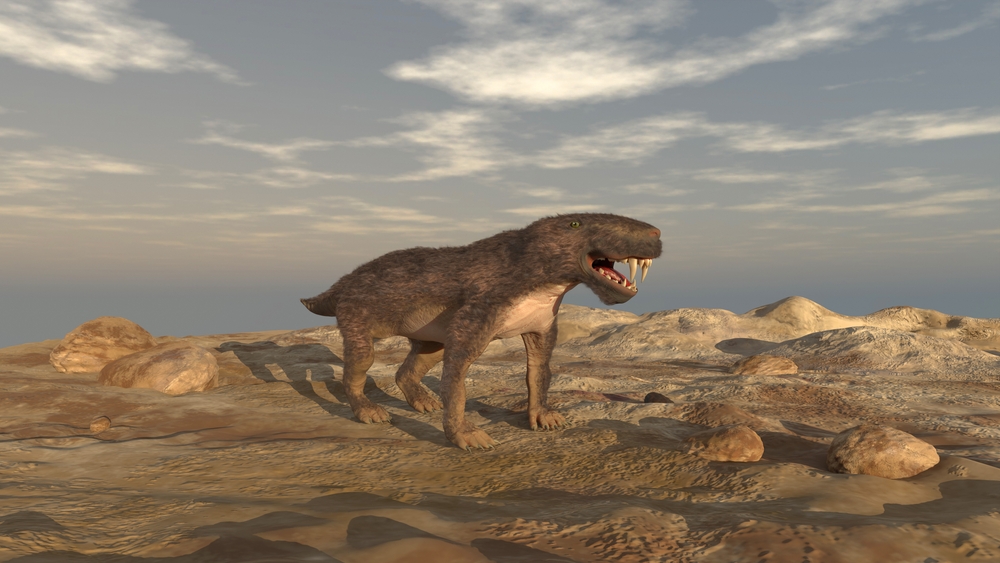Teeth, claws, enormous silhouettes: that’s what a lot of us see when we imagine the prehistoric planet. However, there was a whole host of animals living it up before the rise of the dinosaurs that saw them dominate the Earth until Chicxulub crashed the party.
The same dino fever that led some people to think that some were still living in The Congo has also led to most of us completely forgetting that there’s a whole bunch of species in paleontology that came before dinosaurs walked the Earth, which started around 200 million years ago. Permian animals lived between 299 to 251 million years ago, and among them were the first plant and meat-eating giants ever to stomp across the planet.
Unfortunately, they too would see a grisly demise, as a mass extinction event – that may have been the result of climate change – wiped out around 90 percent of life on Earth. It’s known as the Permian Extinction and it’s considered by some to be Earth’s worst day, which is saying something because it’s had some bad’uns.
The Permian had remarkable biodiversity, including animals that may look and sound like dinosaurs, but were – in fact – not dinosaurs. Dimetrodon (pictured above) comes to mind here, being a large, non-mammalian log of an animal with a giant sail on its back. It was a synapsid, which is a group of animals from the Permian and Triassic that over time started to show increasingly mammalian features, eventually giving rise to their early ancestors.

Image Credit: Kostiantyn Ivanyshen/Shutterstock.com
We simply can’t touch on synapsids without a hat tip to Cotylorhynchus, an animal that’s best described as a pea-headed croc with about seven more chins than you’d expect. It had a barrel-shaped body and broad, thick skull, and was an important part of the ecosystem as one of the earliest large herbivores.
They look a bit like reptiles because they are a bit like reptiles, having evolved as one of the two major clades of vertebrate animals that evolved from basal amniotes. The other group was the sauropsids, which branch off into reptiles and birds.

Edaphosaurus lived in what’s now North America and Europe.
Image Credit: Elenarts/Shutterstock.com
If you like slabs with sails, then Edaphosaurus is another Permian monster you’ll be keen on Edaphosaurus. Measuring up to 3.5 meters (11.5 feet) in length, it had a tiny head equipped with large, peg-like teeth, perfect for grinding up plants.

Scutosaurus looks intimidating, but it was sort of like the Permian’s answer to a cow.
Image Credit: Esteban De Armas/Shutterstock.com
Scutosaurus was another herbivore of the Permian. “But all these animals all have ‘saurus’ in their names!” I hear you cry, “Doesn’t that mean dinosaur?” No, actually. Saurus means lizard, which is why we see it used in many lizard-like dinosaurs (Tyrannosaurus means terrible lizard, for example).
Palaeoart of Scutosaurus makes it appear like a fearsome foe, covered in armored plates with a stocky build and an intimidating ~3-meter (~9.8-foot) frame. However, this large anapsid reptile is comparable in size and lifestyle to a cow, wandering long distances in search of fresh foliage.

Inostrancevia was a large carnivorous therapsid and is known from two almost complete specimens.
Image Credit: Esteban De Armas/Shutterstock.com
The Permian did have its predators, and one of the most impressive was Inostrancevia – one of the largest and most fearsome of a group known as the Gorgonopsids. A major group of the synapsids, they were carnivorous predators with big, sharp canines that made them look almost like saber-toothed cats (though they wouldn’t evolve until a few hundred million years later). It’s thought they used them in a similar way, capturing and tearing apart their prey.
Inostrancevia was among the largest, stretching well over 3 meters (9.8 feet) in length with powerful limbs, a long muscular tail, and a bulky body to boot. It would’ve fed on early reptiles and synapsids as an apex predator of the Permian, but its lofty position wasn’t enough to save it from Permian Extinction that paved the way for a biodiversity boom come the Triassic – a time otherwise known as the rise of the dinosaurs.
We often think of extinction as the end of something, but when it comes to the bigger picture, extinction is a crucial part of life. Without niches to fill, new life and species can’t emerge, and had it not been for the explosive events that took out the monsters of the Permian, we might never have gotten the giants of the Triassic.
And without the asteroid that wiped out the dinosaurs? Well, we probably wouldn’t have got The Internet.
Source Link: Permian Monsters Roamed The Earth Before The Rise Of The Dinosaurs